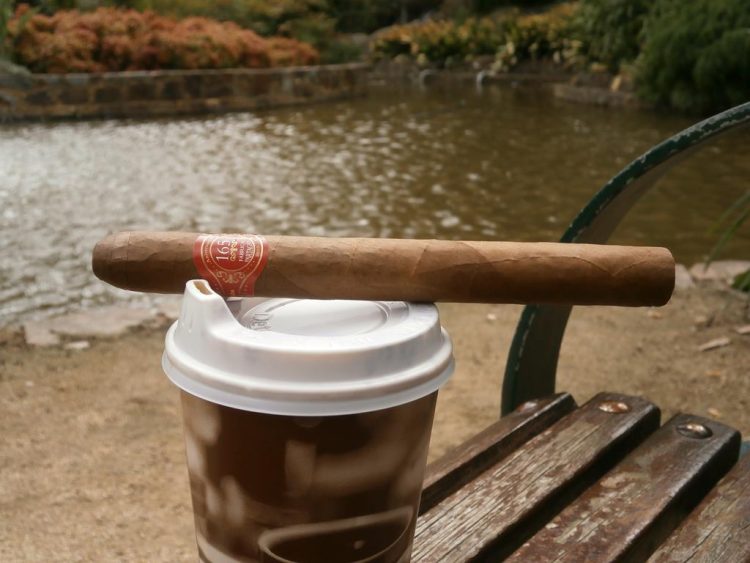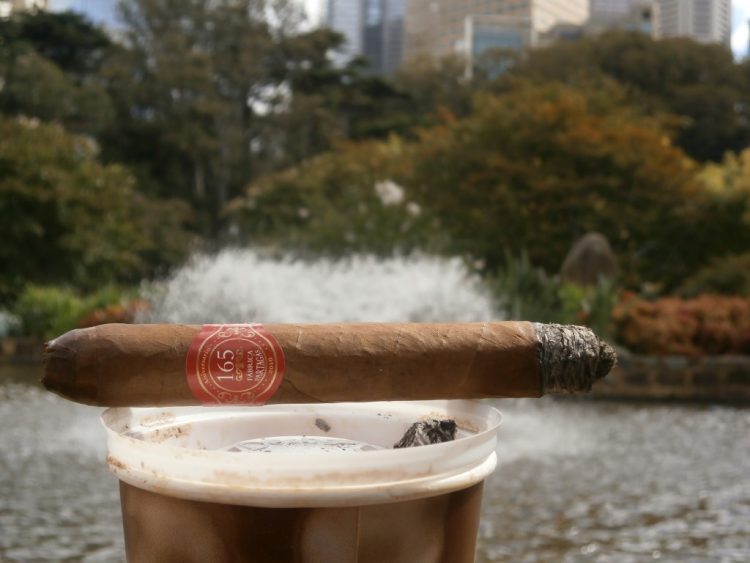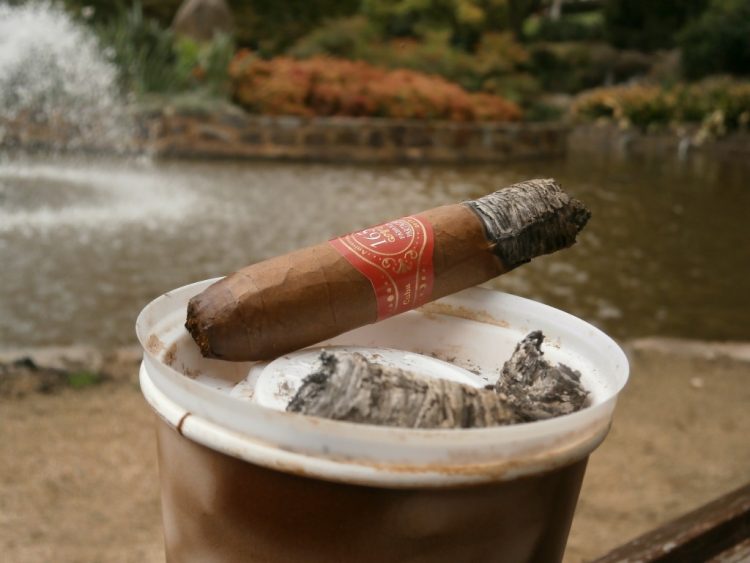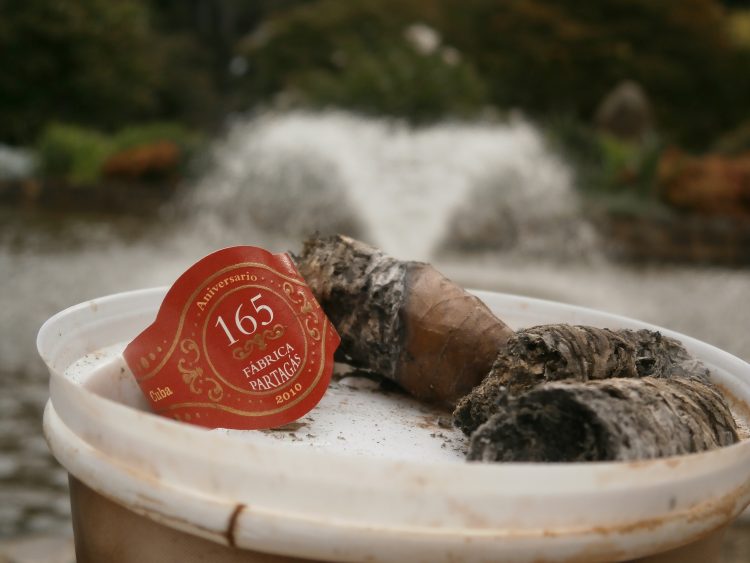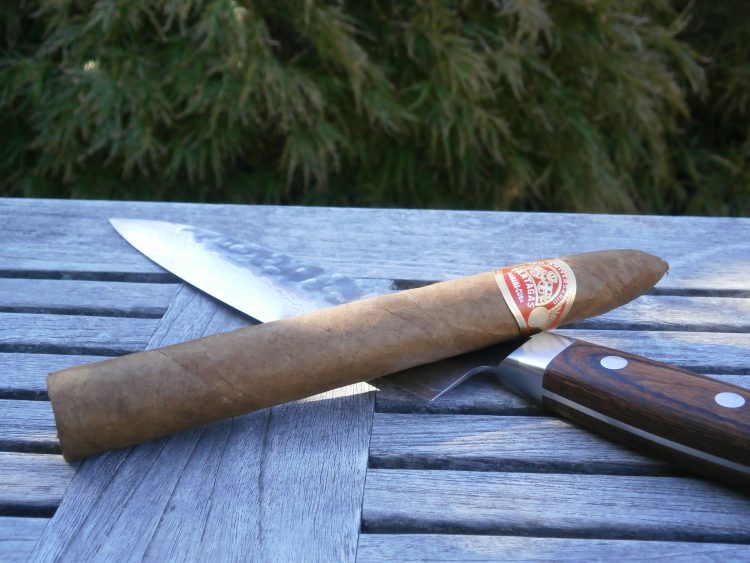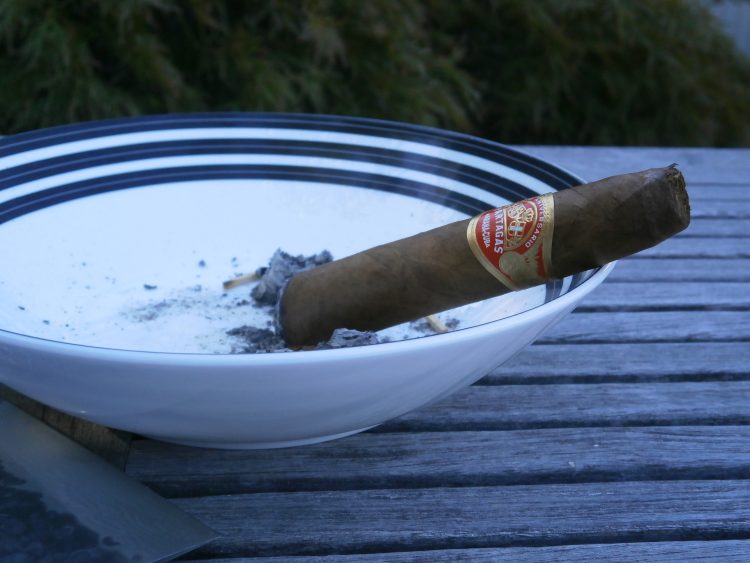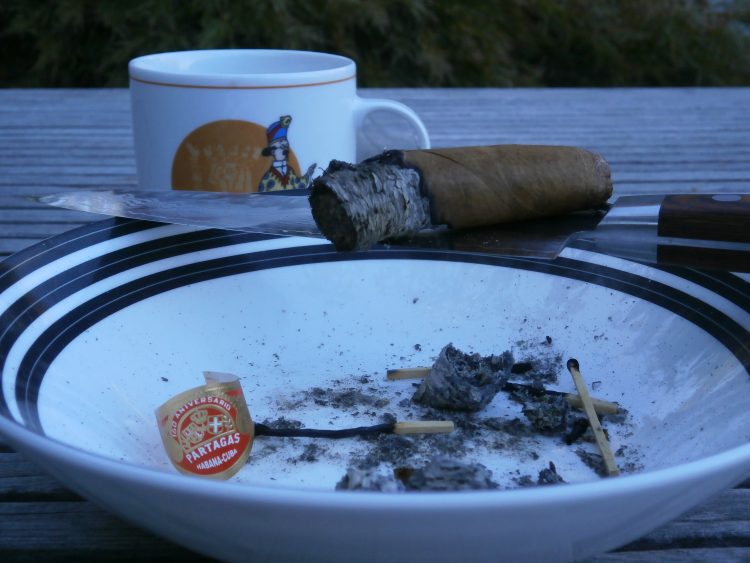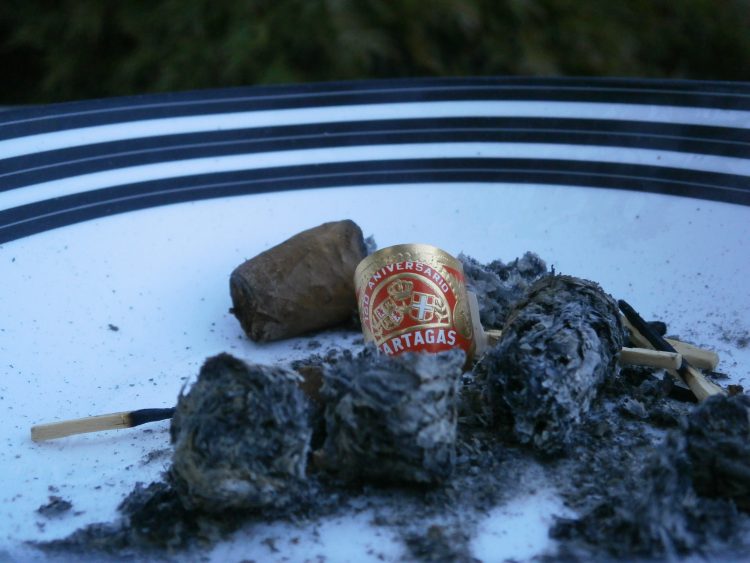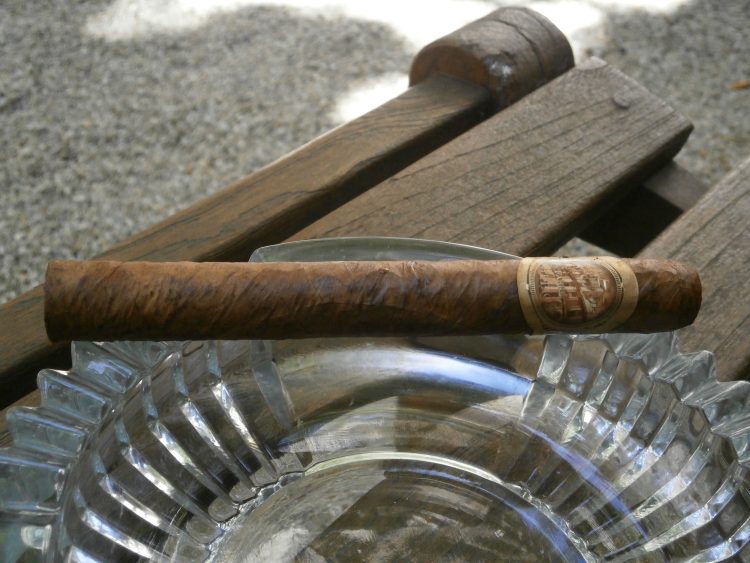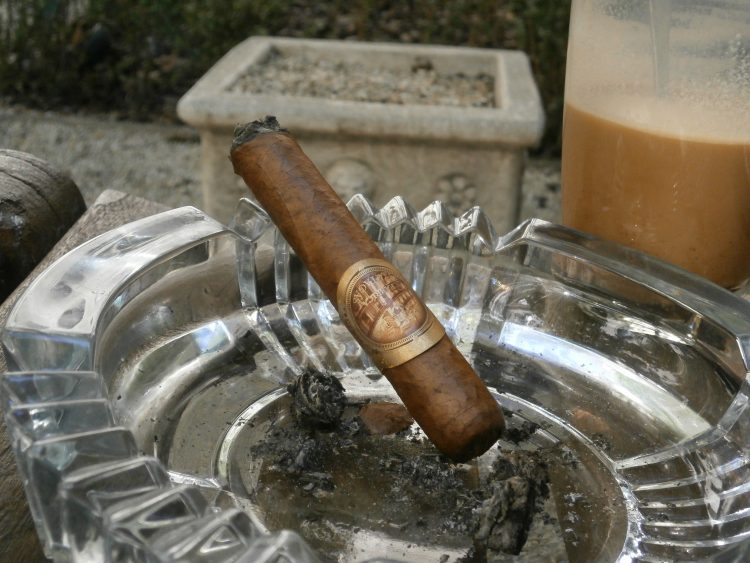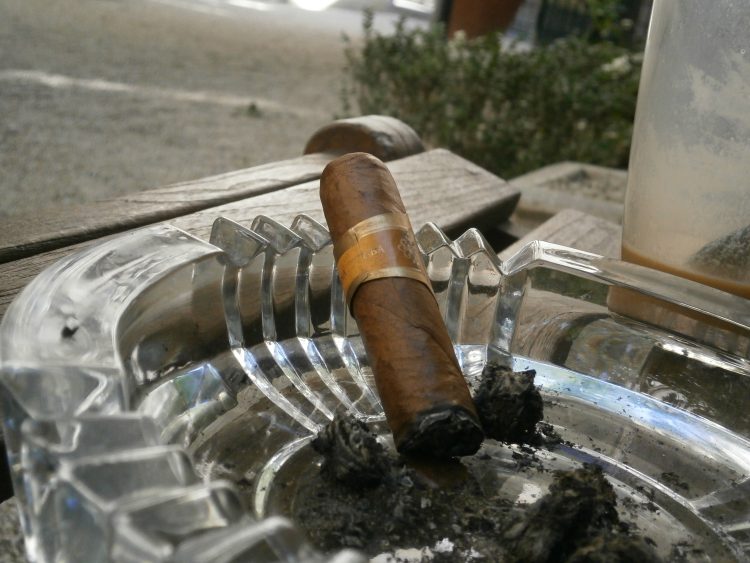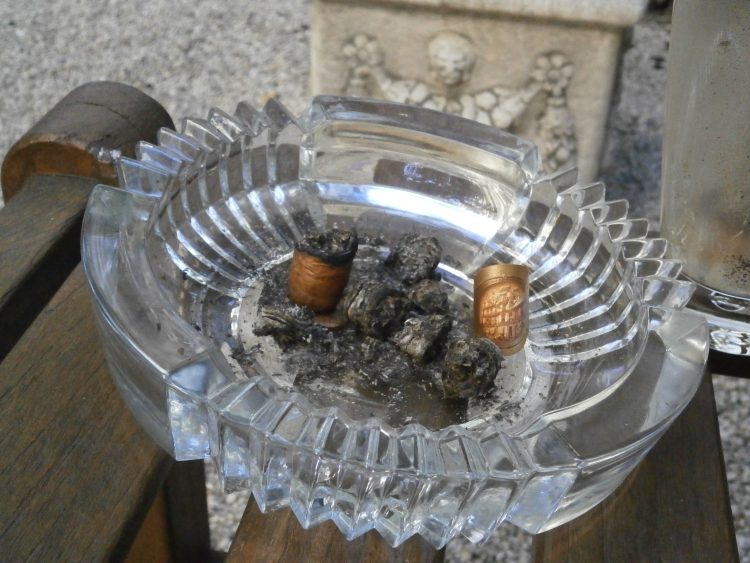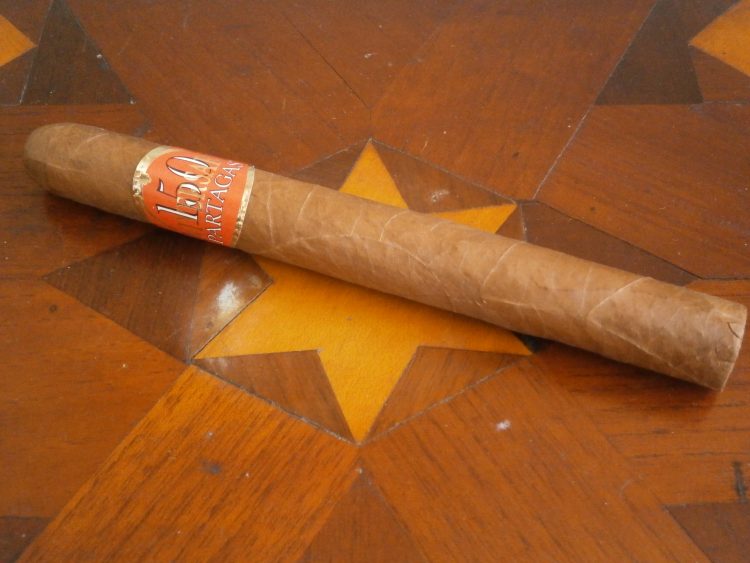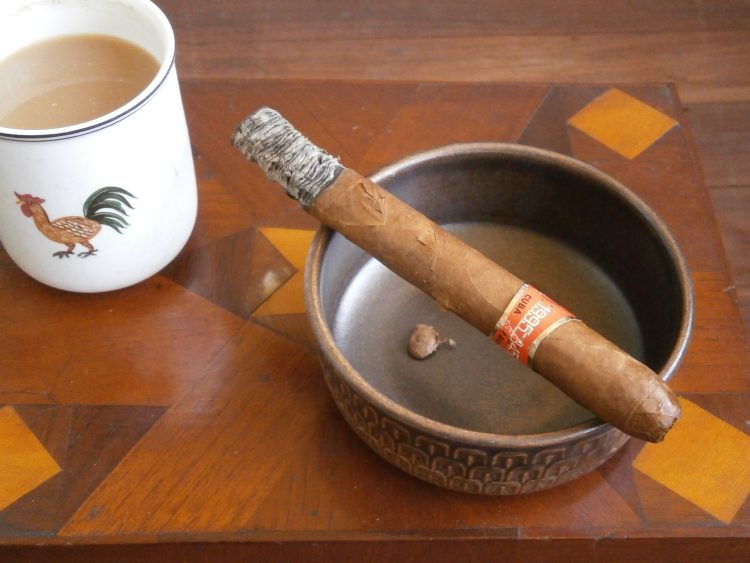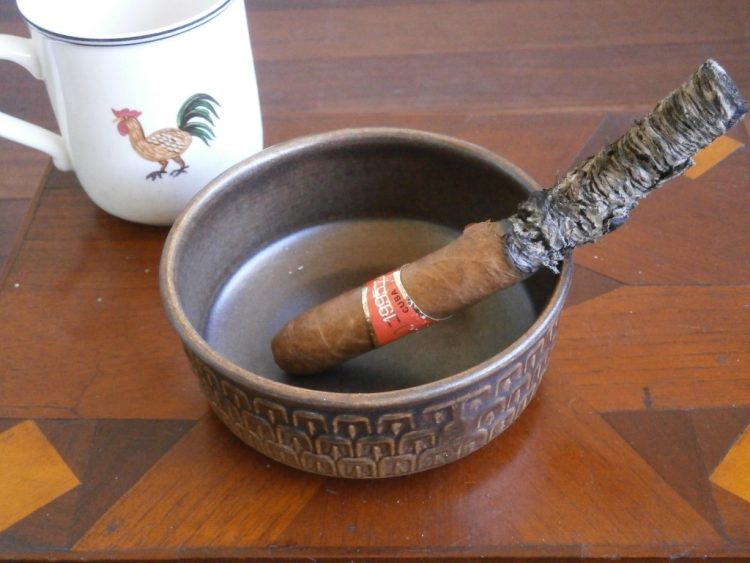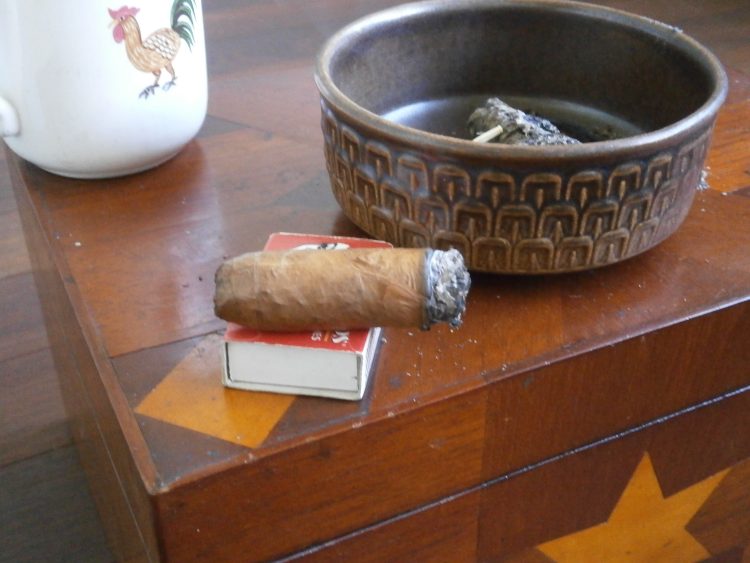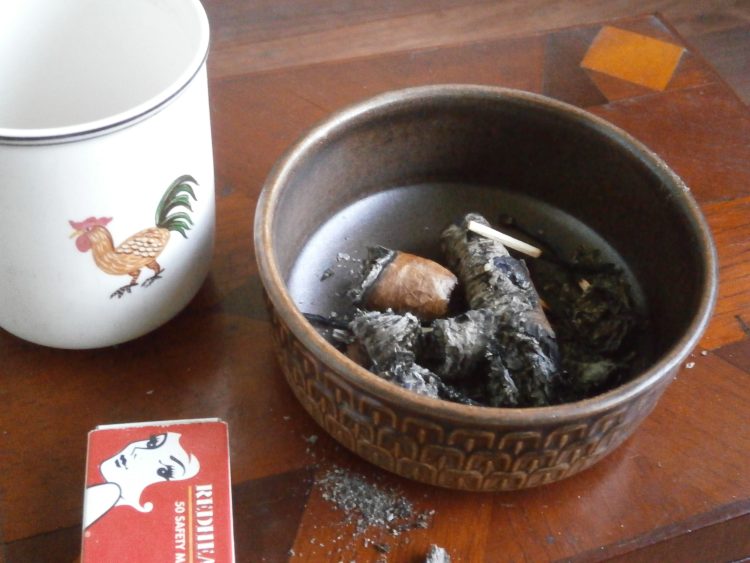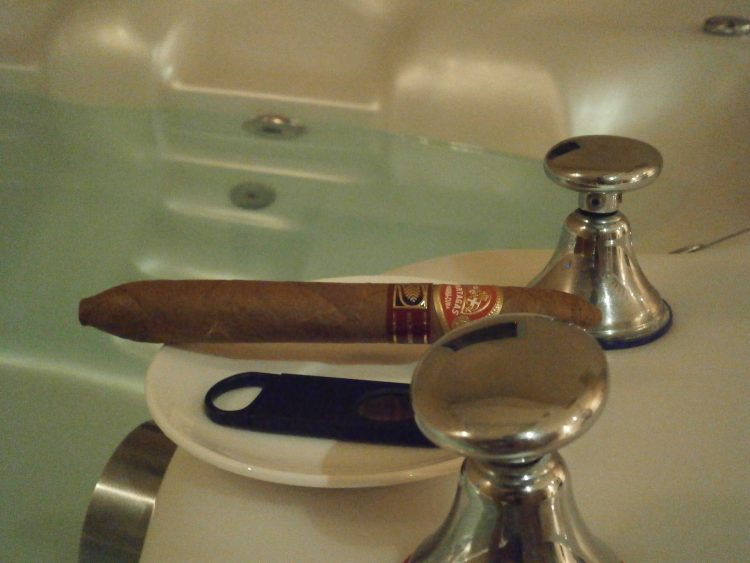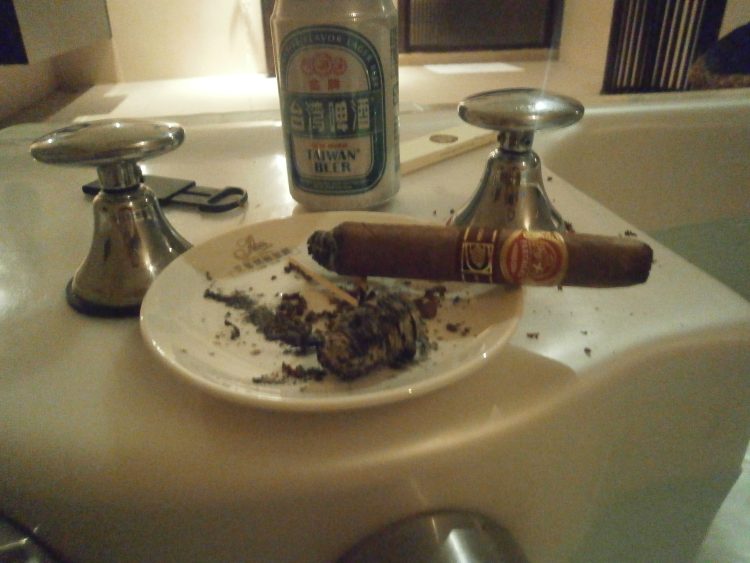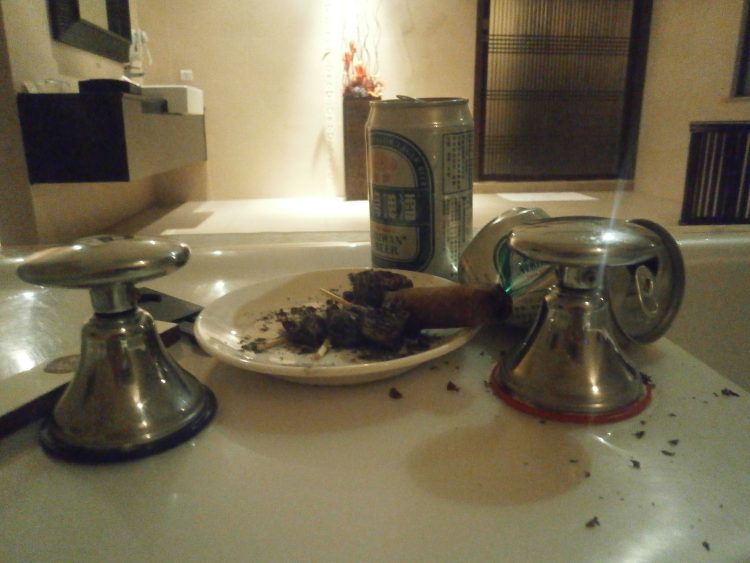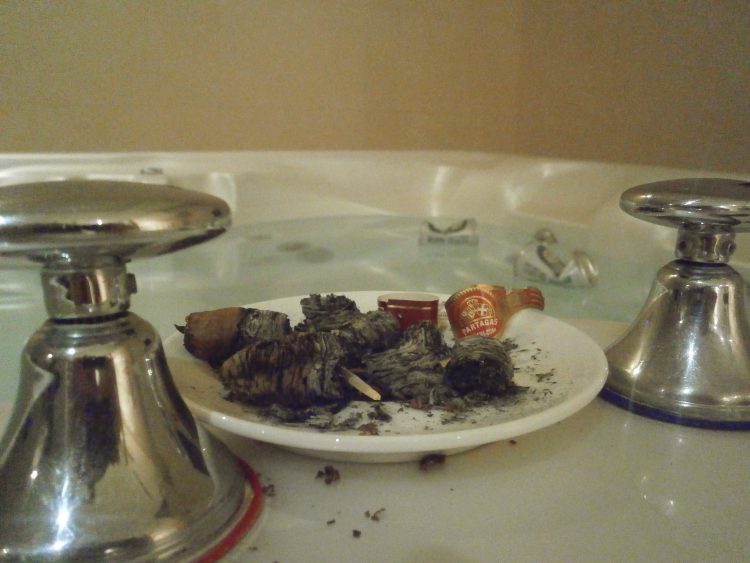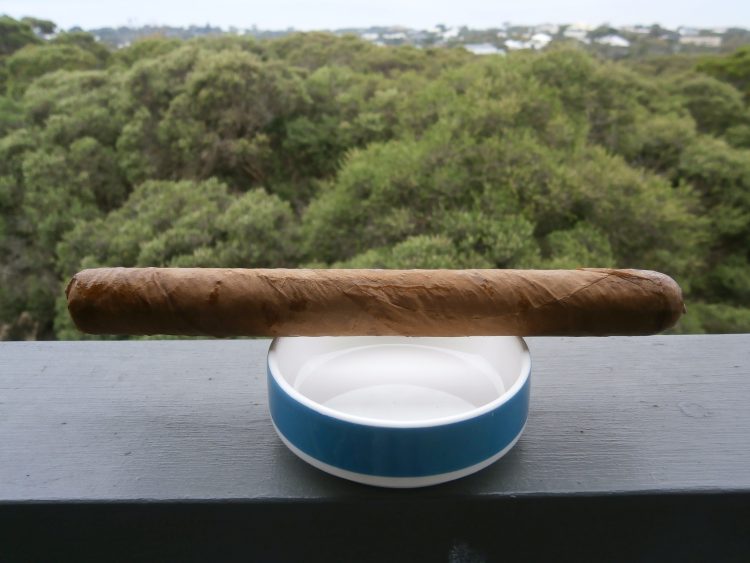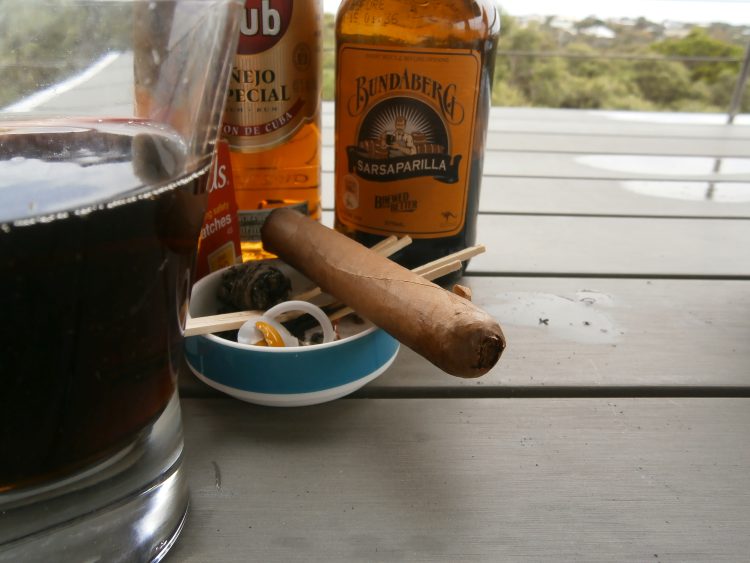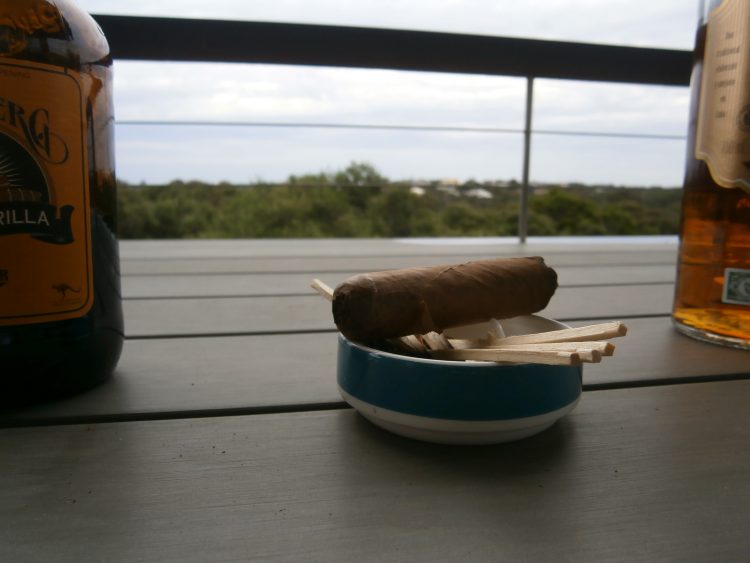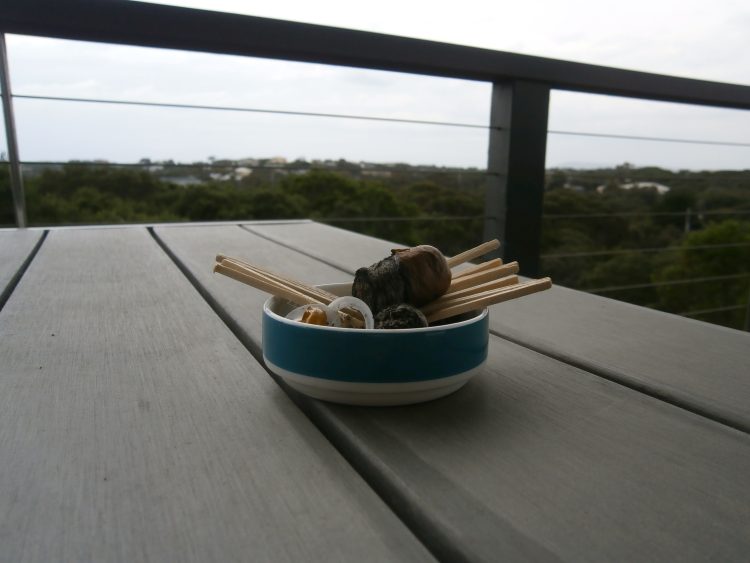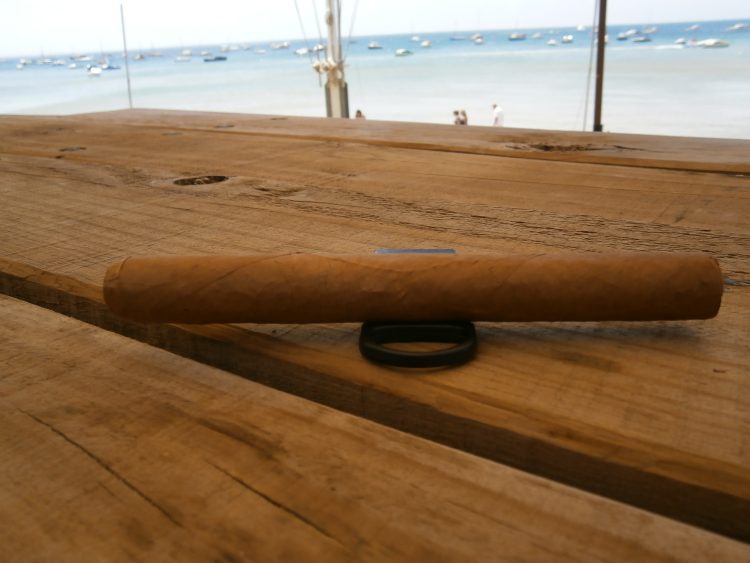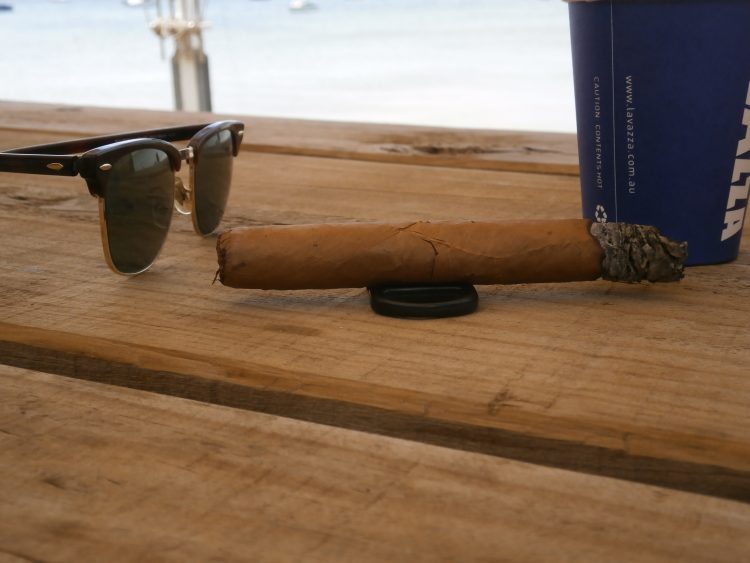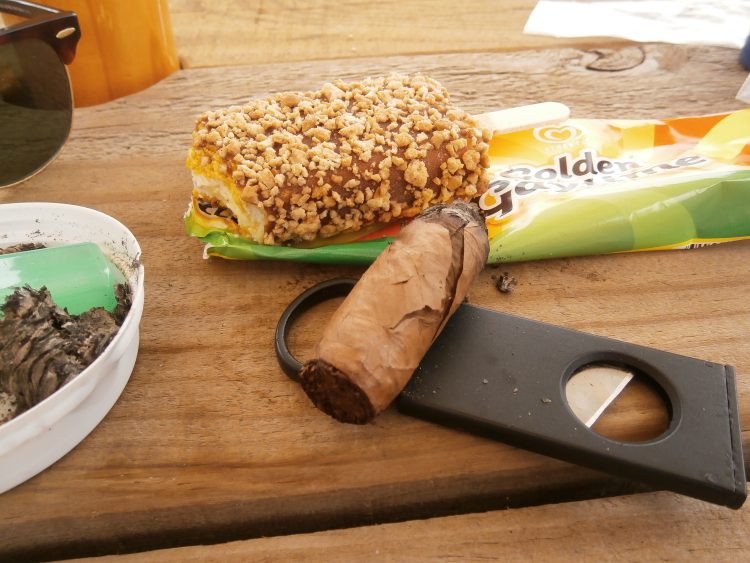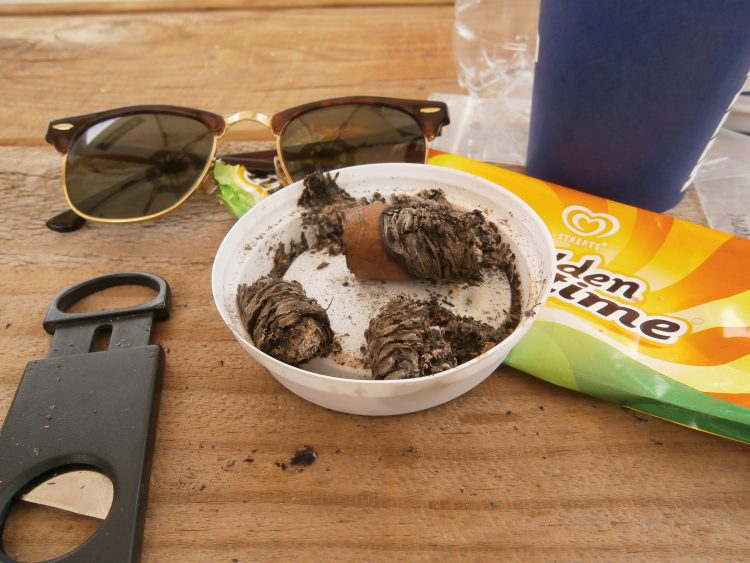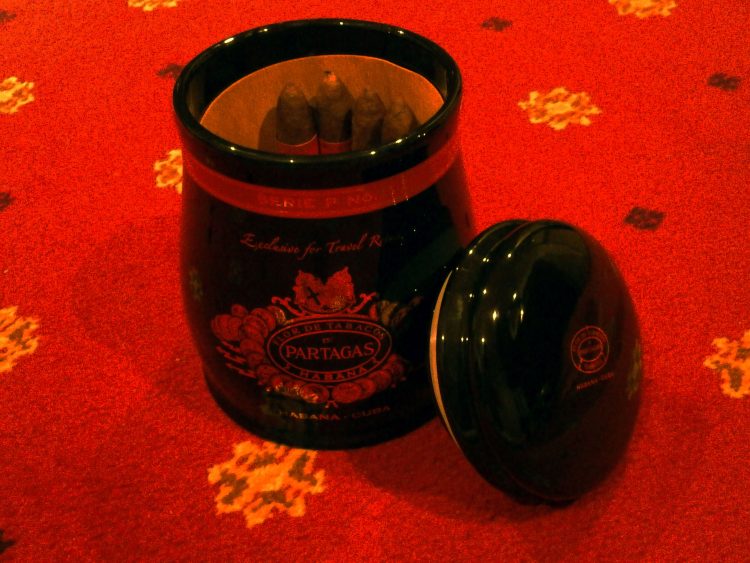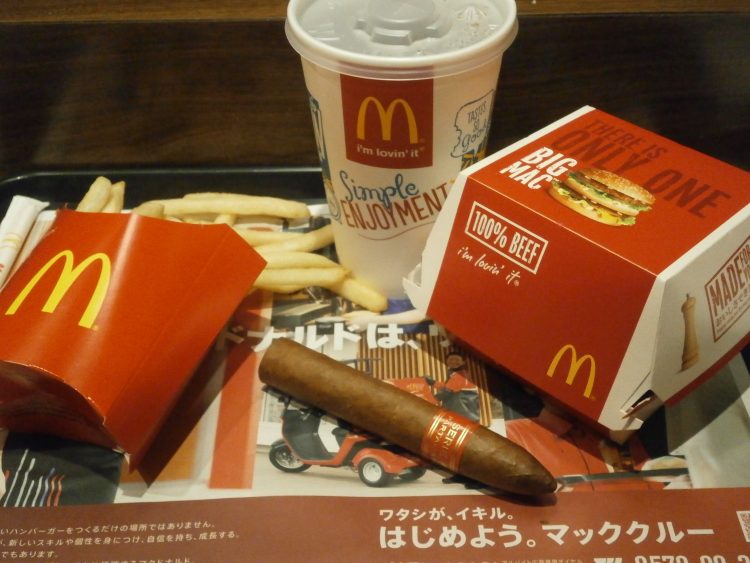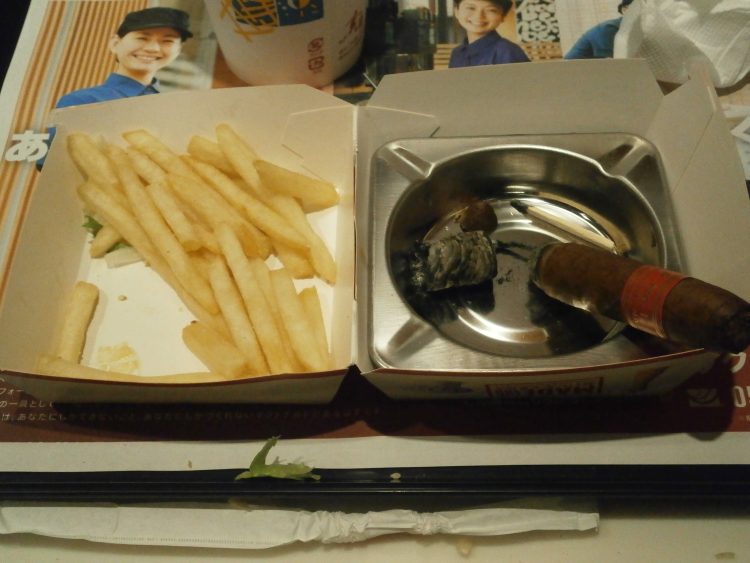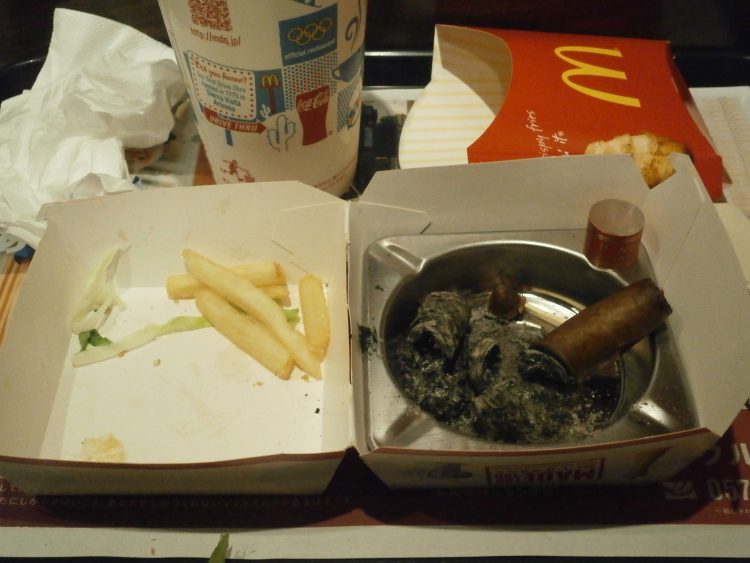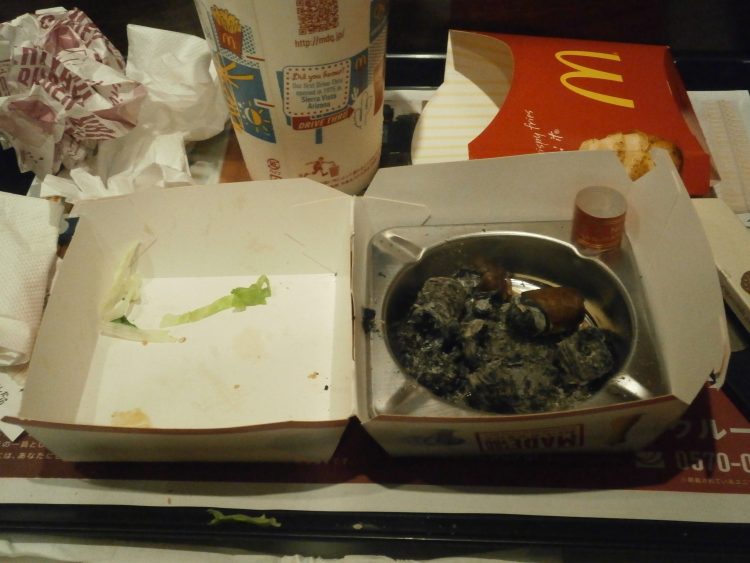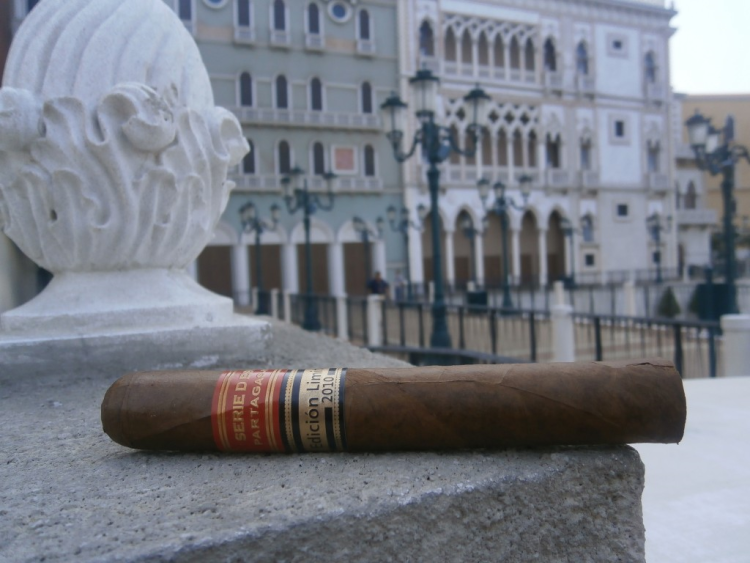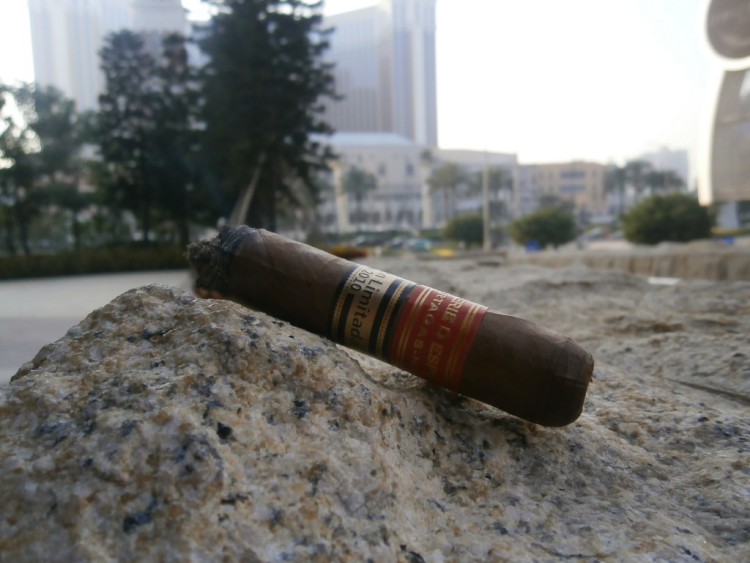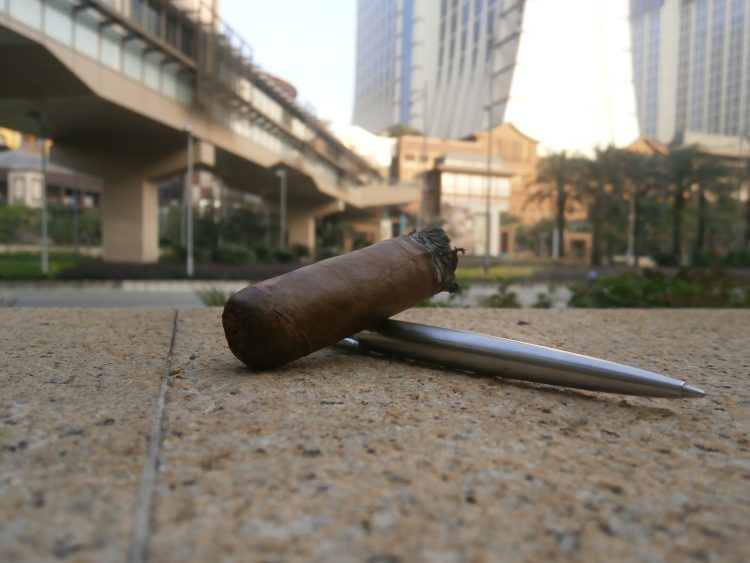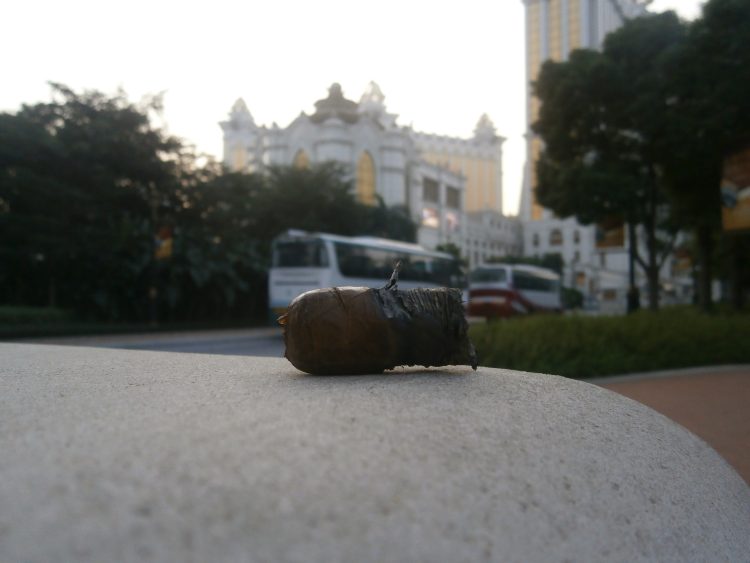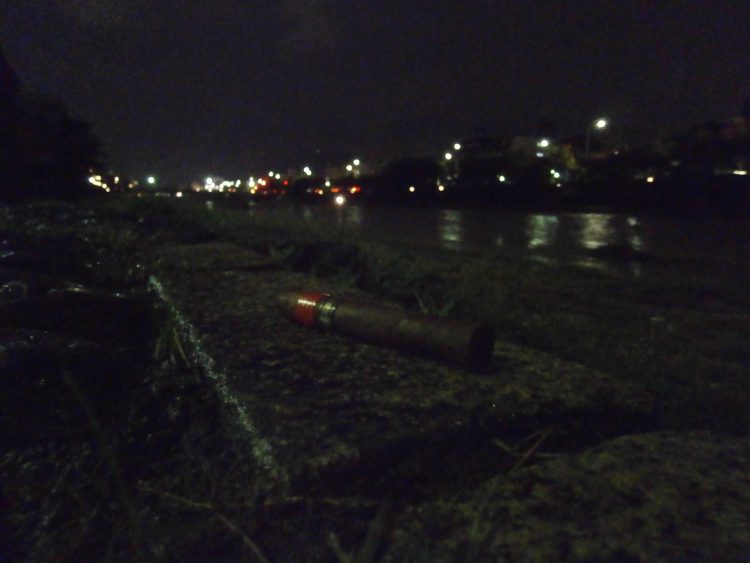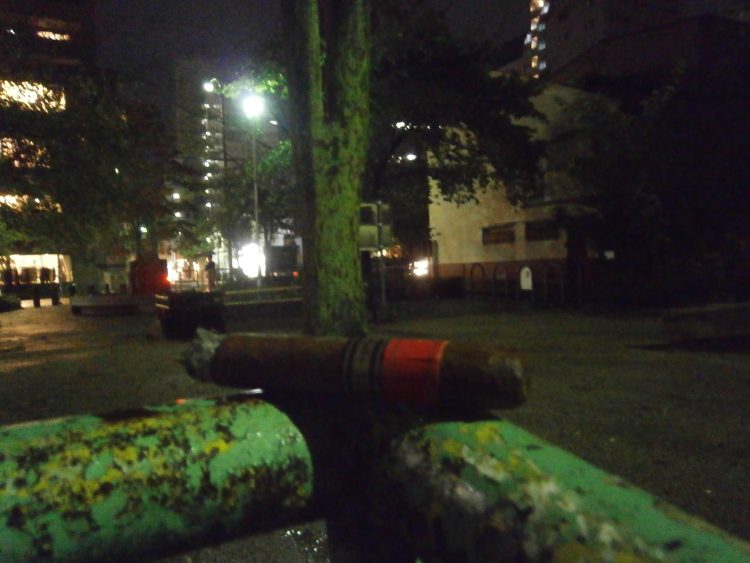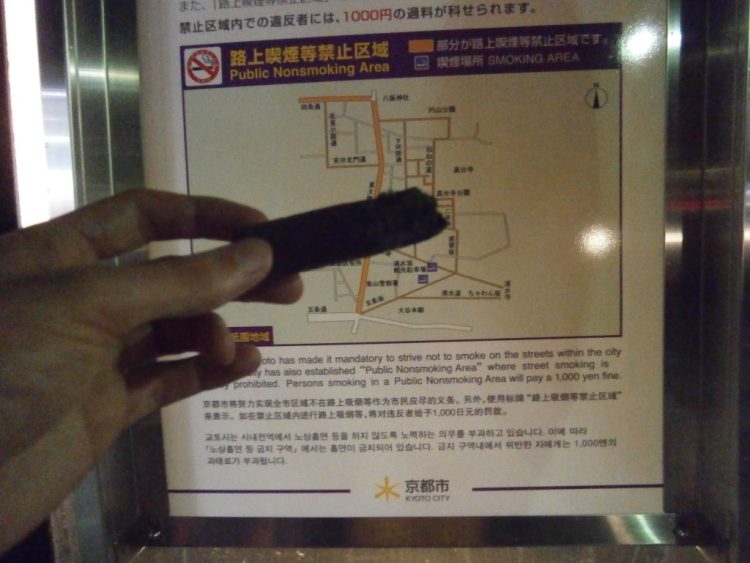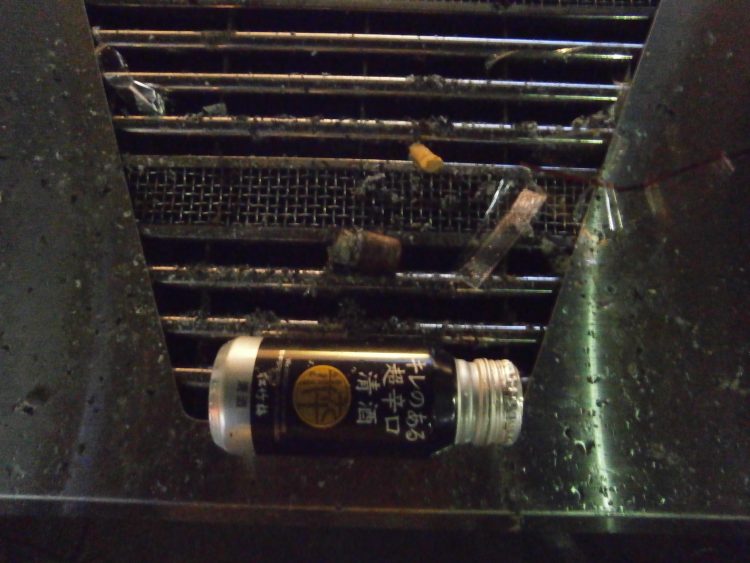I’m seated on a bench in a public park overlooking a small lake. In the small lake there is a small island, and on the small island there is a small paved area with a bench and a large stone monolith that has a familiar silhouette carved into it: Melbourne’s memorial to John F. Kennedy. My plan coming here was to enjoy a cigar on that bench, and to share a little of my fine Cuban tobacco smoke with a man well known for his enjoyment of the same (and a man who did more to keep the prices of Cuban cigars down than anybody else in history), however, upon arrival I found the bench occupied by a young couple paying tribute to Jack with another of his favourite pastimes, and so me and my Partagás 109 from the 165th Anniversary Humidor are exiled to the far shore. It’s a big risk starting a three hour cigar in a park on a day like today; the sky is overcast, and rain is a definite threat.
I’ve said it before and I’ll say it again: there are few sizes nobler than the Nro. 109. If I really had to choose I suppose I’d take one of the long and thin panatelas, the Laguito No. 1 or No. 2 over the 109, but not much else. I pick the end of the cap off with my fingernail and torch the tip with my bic. The first notes are very sour, although right from the start there is a distinct heavy cream note trying to creep through. The sourness well and truly ruins it. The tobacco flavour is very light, almost undetectable. I often wonder if it’s my trained palette at work when the flavours are distinct like this, if I have spent so many years trying to taste something beyond the tobacco that my brain is now able to block it out. I need an amateur for a blind test.
The qualities that make the JFK memorial ideal for cigar smoking – namely that it’s sheltered from the elements and quite private (you’re invisible unless someone actually walks into the area, and you can usually see them long before they see you) make it ideal for heavy petting, something I did quite a bit of there in my teenage years. In my early twenties I also used to go there to smoke a different vile weed: the daemon marijuana.
It was never really my thing, the daemon. I used to take it occasionally to help me sleep, but as the years went by it stopped being a peaceful hand that lulled me into dreamland, and instead would keep me awake all night staring hatefully at myself in the mirror. There was a period though, in the back-end of my university days, when a few of my friends were enthusiastic marijuana smokers and drinks in bars seemed awfully overpriced, that we would occasionally get stoned and wander through the city on a Saturday night seeking adventure. The JFK memorial is typically where we would start from.
It’s funny how being inebriated seems to attract adventure. I’ve never been sure how I act when I’m in that state, with every hair on my body alive and prickling, aware of the sensation of my clothes brushing against my body as I move; when time seems to reset every five seconds or so, and conversations become impossible to follow, but as far as I can tell it’s pretty normal. In the early stages I suppose I might babble a bit and lose my train of thought in conversation, but not very far into the second university cigarette I get paranoid that I’m babbling and tend to clam up, answering only to direct questions and only monosyllabically then.
I remember one Saturday night we watched a shopfront burn. The neon sign had shorted out and caught fire, and as we watched the flames spread to some bushes out the front, and then the doormat. It peeled the stickers off the glass windows but didn’t do a lot beyond that. I called the fire brigade, but by the time they arrived it had mostly burned out, and they didn’t even stop their truck, just crawled by slowly checking it out before deciding it wasn’t a threat and tearing off to some more pressing emergency. Singing with strangers was a popular theme on these nights. Once when we were replenishing our buzz in a dark alley we came upon some girls who were trying to break into the back door of an apartment complex. They said they knew somebody who lived there, and we ended up having a sing-a-long with them, some discarded bread crates serving as a stage. I can recall at least five other occasions when we’d run into someone in a similar (or worse) condition to ourselves, who serenaded us with their freestyle rap. Once I wandered into a karaoke bar and attempted to sing Total Eclipse of the Heart, a song I crush when alcohol is the cause of my insobriety, and found myself totally butchering it. I wasn’t able to follow the key changes at all.
Halfway through the cigar is very pleasant, with a heavy cream note. There is a distinct coffee flavour as well, which is accompanied by some bitterness, but it doesn’t detract from it. In the aftertaste there is a slight orange citrus note. The draw is a tiny bit tight. It’s entirely my fault. When I opened this cigar I picked off just the cap, which with a regular shaped cigar would have been fine, but the 109’s conical head should probably be cut a little lower. To rectify the situation I periodically put my nail into the nub and wiggle it a bit, freeing up the tobacco. It makes a world of difference.
I remember one night on the herb we made friends with a group of black guys. We were walking along the street, stoned out of our minds when they stopped us and asked us where a certain club was. They weren’t blackfellas like we have in Australia (which in Melbourne are few and far between), but African Americans like you see in the movies, with baggy pants and baseball caps. They sniffed out our weed pretty fast, and soon we were sitting on a stoop passing around jazz cigarettes feeling like we were in a Spike Lee joint. They took us to the club, where at first the bouncer didn’t want to let the white boys in, but the leader of our new friends explained that we were “aight,” did a complicated handshake, and in we were, the only white faces in a room that was wall to wall in baggy pants, snapback caps and girls with juicy butts in tight leopard-skin dresses. It was straight out of South Central LA, a place I never would have imagined would exist in the middle of Melbourne. I say we were the only white faces: I mean we were the only white male faces. There were a lot of white girls there, every one of them looking at my friend and I with undisguised distain. My friend went off to dance, and when he did one of the white girls came up to me. “I don’t think you should be here” she said, looking down her nose. “I don’t think your friend is okay.”
The condescension and blaring hip-hop was too violent an assault for our messed up brains, and so within ten or so minutes we were back outside in an alley with a few of the black guys, passing joints around. One of our new friends wandered into the circle and held out his hand for me: “check this out.” His woollen fingerless glove was soaked through with something thick and viscous. I tentatively touched it with my finger. Blood. “Are you alright bro? Did you cut yourself?” He smiled a toothy smile. “Nah” he said “I just beat the shit out of some white-boy around the back.”
We parted company shortly after.
The ending of the cigar is very dry and dusty, like sandy soil. It actually makes you thirsty. In the final inch or so it grows bitter with the tar, but in that bitterness there is a very distinct powdered chocolate note – the kind you get on the top of a cappuccino. Ten years of age improves most cigars, but typically when you say a cigar needs more age you mean that it’s too strong, which is not the case here. The tobacco is very mild, and the whole thing is well balanced, but it’s not terribly elegant. Ten more years should round off the rough edges and make it a smooth, elegant, coffee and cream bomb.
In 2014 this is the weakest of the four Partagás anniversary cigars, but it’s the one that has the most potential to improve in my eyes. If you have a box I’d leave it alone and check back in 2020. Even now, it’s still better than a PSD4.
